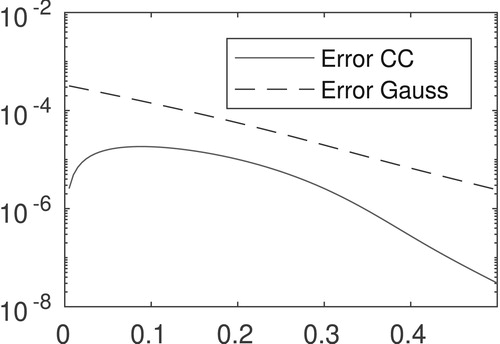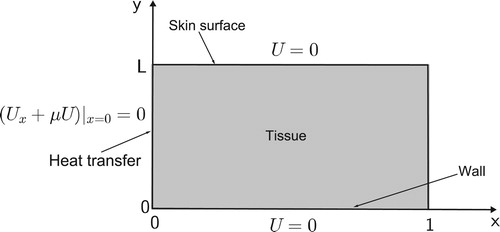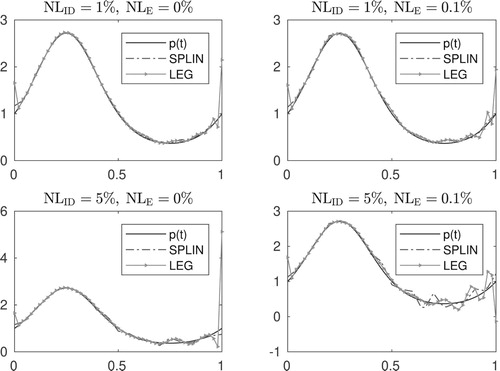Figures & data
Figure 2. Exact solution and numerical solution of model (Equation1(1)
(1) )and corresponding error.
![Figure 2. Exact solution and numerical solution of model (Equation1(1) Ut=Uxx+Uyy−p(t)U(x,y,t)+f(x,y,t),(x,y,t)∈]0,1[×]0,L[×]0,T],(1) )and corresponding error.](/cms/asset/cc74b672-d1db-4535-812b-4a1e29903053/gipe_a_1846034_f0002_ob.jpg)
Figure 3. Left: Energy values and their Chebyshev-Clenshaw–Curtis based approximations. Right: Pointwise error.

Figure 4. Comparison of quadrature rules efficiency. The error for Clenshaw–Curtis and Gaussian quadrature rules are labelled by Error CC and Error Gauss, respectively.

Figure 5. Left: Exact and noisy data for numerical inversion. Noisy data in this illustration corresponds to noise level . Right: Exact coefficient
and recovered ones.

Table 1. Relative error in reconstructing .
Figure 7. Left: Exact and noisy data for numerical inversion. Noisy data in this illustration corresponds to noise level . Right: Exact coefficient
and recovered ones.

Table 2. Relative error in reconstructing .
Table 3. Relative error in estimated coefficients.







